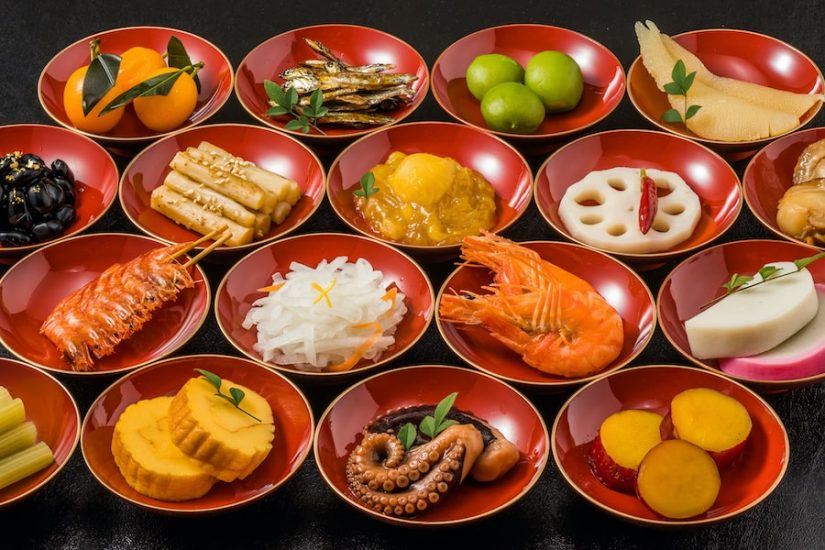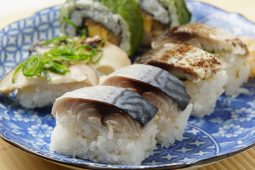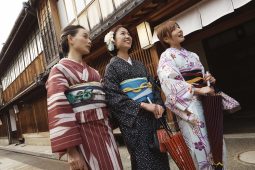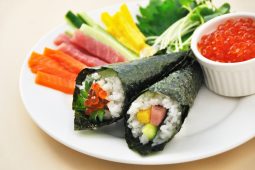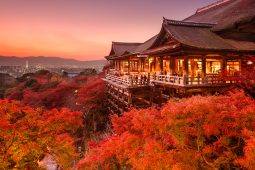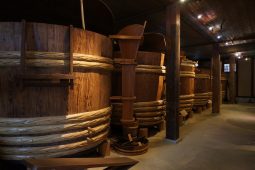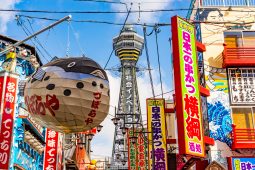This is the second part of our introduction to the main elements of Kyō-ryōri; the traditional cuisine of Kyoto, and the best Kyō-ryōri restaurants. In Part 1, we looked at some key ingredients such as tofu, fu, and fish. In Part 2 we will look briefly at matcha sweets, before examining some of the main styles of Kyoto cuisine from homely obanzai side dishes to high-grade kaiseki multi-course meals.
Matcha is the powdered green tea used in the tea ceremony and Kyoto is famous for the quality of its matcha and for its large number of tea shops. Recently, matcha flavored desserts are very popular and there are many matcha cafes dotted around Kyoto serving such tasty sweets. One of the most popular tea shops is the main store of Gion Tsujiri, which is located in the heart of the Gion district on the south side of Shijo Street. Downstairs they have a store selling tea with tea-flavored products, and upstairs they have a café were you can enjoy matcha-flavored parfaits, cakes, ice-creams, and for those who do not have a sweet tooth — matcha-flavored noodles.
Gion Tsujiri website: http://www.giontsujiri.co.jp/
Google Map: https://goo.gl/maps/4WKxkNj1nDTQWzkQ9
Obanzai is the traditional home cooking of Kyoto made mainly with seasonal vegetables, tofu and pickles. Obanzai is marked by the huge variety of dishes, as well as by its simple, wholesome ingredients. One of the most popular obanzai restaurants in Kyoto is Menami; a 70-year-old establishment in downtown Kyoto where you can choose freely from the colorful dishes on display or order a set meal or a course where the dishes are chosen for you. One of the fun aspects of obanzai dining is that as each serving is quite small, you can experience a great range of flavors in one meal.
Menami website: http://www.menami.jp/company.html
Google Map: https://goo.gl/maps/Airzgx7W3m7tiZhF8
Kaiseki is traditional multi-course gourmet cuisine made with carefully selected seasonal ingredients and beautifully presented to stimulate the eyes almost as much as the taste-buds. Kaiseki grew out of meals served with the tea ceremony, but modern kaiseki incorporates the cuisine of imperial, samurai, and Buddhist traditions. There are many fine kaiseki restaurants in Kyoto, and each has its own style, but Kitcho in Arashiyama is one of the most famous. In the beautiful setting of this classic Japanese villa you can experience an exquisite meal made from the very finest ingredients.Be warned though, that kaiseki is not cheap, and the most inexpensive course costs 40,000 per person.
Kitcho website: https://kyoto-kitcho.com/en/
Google Map: https://goo.gl/maps/HxyTQnKNQmNz5RBg9
Shōjin ryōri is a type of Buddhist vegetarian cuisine developed by monks who were not allowed to eat meat, fish, or strong flavored plants such as garlic. Making ingenious used of fu (gluten), tofu, garden vegetables, mushrooms, and wild mountain greens, the monks created an incredible array of dishes full of flavor, color, and nutrition. Naturally, the best place to eat authentic shōjin ryōri is at a temple. We recommend, Shigetsu, which is a dedicated shōjin ryōri restaurant overlooking the Zen garden of Arashiyama’s Tenryuji Temple. Shōjin ryōri can be quite expensive, but at Shigetsu the prices are very reasonable, ranging from 3,300 yen for the cheapest course, to 8,000 yen for the most expensive. Each course comes with a seasonal soup, rice, and a number of side dishes that highlight the variety of flavors and tastes that are possible with this highly inventive cuisine.
Shigetsu website: http://www.tenryuji.com/en/shigetsu/
Google Map: https://goo.gl/maps/fivXBt4mDR4oqQNY7
Yuka balcony dining is a fine summer tradition in Kyoto. During the summer months between May and September, restaurants lining the banks of the Kamo River build wooden platforms, called yuka, so that patrons can dine outdoors and enjoy the cool evening breeze as they eat their meals. There is something very romantic about dining on a yuka balcony at twilight while watching the lights come on over the city and the people promenading along the river. One of the best restaurants to enjoy yuka dining is Shiki Yoshina on Pontocho. Here you can enjoy friendly service and some of the best elements of Kyō-ryōri from a wide-ranging menu that includes many of the items listed in Part 1 of this guide, such as hamo, yuba, and fu.
Shiki Yoshina website: http://yoshina.net/ Google Map: https://goo.gl/maps/AiBNLF2DQCb4vaU48


